#fun fact- this is the first ever film adaptation of a lovecraft story
Explore tagged Tumblr posts
Text
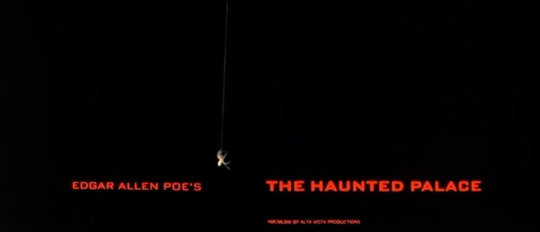
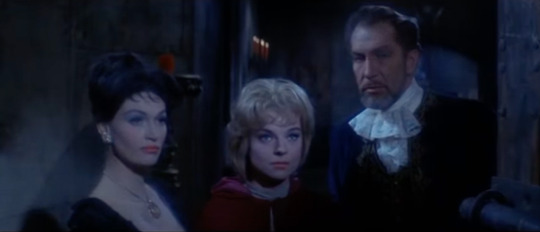




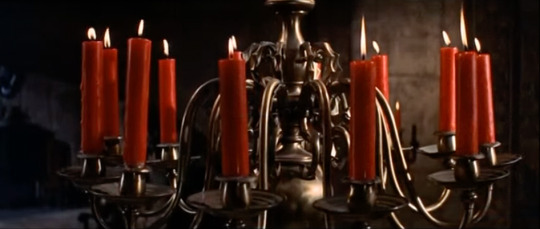



The Haunted Palace, 1963, dir. Roger Corman
#horror aesthetic#horror movies#the haunted palace#lovecraftian horror#vincent price#60s horror#roger corman#new england gothic#fun fact- this is the first ever film adaptation of a lovecraft story
38 notes
·
View notes
Text
oh yeah
list of horror movies i made like a week ago and then forgot about. because i was mad that everyone watches the same ones over and over. so these are some less-talked about movies that I enjoy
full list under cut! some of these movies are really good, and some of them are really bad. all of them are things i watch on a semi-annual basis for the halloween season or just for fun. movies are listed in chronological order (1958 - 1988) with brief descriptions or facts i know. if youve seen something on here, let me know what you thought of it!
author's picks:
The Blob (1958) ; The Raven (1963) ; The Haunting (1963) ; The House That Dripped Blood (1972) ; Penda's Fen (1974) ; House (1977) ; The Company of Wolves (1985) ; Bad Dreams (1988)
this is a CONDENSED version of what i could just think of in the moment and is primarily movies from the 1960s. maybe ill add more when i have the time
The Blob (1958) [sci-fi horror] - theres a blob terrorising some late 50s teenagers. slow beginning but has some really cool practical effects for the blob and the best opening song ever. if you just want to hear the song look up "the blob" by the five blobs. blob doesnt look like a word anymore
13 Ghosts (1960) [haunted house]- a family moves into a haunted house, but inherits special goggles that allow them to see the ghosts. theatregoers themselves would receive coloured cellophane glasses and be instructed to put them on during the ghost scenes, where the film would switch into 2 different colours--actors and the sets overlayed with blue, while the ghosts would be overlayed in red. the different ghost stories are neat and the 13th ghost reveal is very cool. will make you very angry at the pronunciation of "ouija" (as in the board) for the rest of your life if you know how "j" is pronounced in german
The Little Shop of Horrors (1960) [horror/comedy] - NOT the musical (though that is very good), but the movie the musical was based on! slightly different in some aspects. i think all of the available copies of this are really low quality but still a fun watch
The House of Usher (1960) [gothic horror] - The Fall of the House of Usher adaptation starring Vincent Price. shot in 15 days with 1/3rd of the total budget going to Price. very cool sets
The Raven (1963) [gothic horror/comedy] - starring Vincent Price and Boris Karloff, expands upon The Raven poem. a very funny movie + theres wizards :)
The Comedy of Terrors (1963) [horror/comedy] - starring Vincent Price, Peter Lorre, Boris Karloff, and Basil Rathbone. follows two undertakers (Price and Lorre) trying to save money with their failing funeral home and dealing with their landlord. nobody in this movie is a good person
The Haunting (1963) [haunted house]- adaptation of Shirley Jackson's The Haunting of Hill House. this house is alive and loves you soooooo much <3 you cant leave, and you wont want to <3
The Day of the Triffids (1963) [sci-fi horror] - fucked up alien plants. all i have to say about it, really
Dr. Terror's House of Horrors (1965) [horror anthology]- despite the name, this anthology series is based on a train. the 'house of horrors' of the title is actually what Peter Cushing's character calls his deck of Tarot cards. 5 passengers draw a card from the deck and 5 stories are told, each unique in genre
The Ghost and Mr. Chicken (1966) [haunted house/comedy] - starring Don Knotts, who plays a wanna-be-reporter investigating a local fucked up haunted house. the reason i love chicken noodle soup
Mad Monster Party? (1967) [stop-motion musical comedy] - Rankin-Bass' lesser-known stop-motion holiday special. a really cute movie with a fun twist at the end, nothing incredible but very enjoyable
The Dunwich Horror (1970) [supernatural horror] - very very lose adaptation of HP Lovecraft's story by the same name, and largely considered the first successful adaptation of Lovecraft on screen. psychedelic as hell. a good time with friends
Valerie and Her Week of Wonders (1970) [folk horror/Czechoslovak new age] - A Czechoslovak surrealist fantasy horror based on the 1935 novel of the same name. a very beautiful, dream-like film that deals in a lot of symbolism. the film is concerned with the troubles maturing girls face, including scenes of sexual harassment, which some viewers may find uncomfortable to watch
Willard (1971) [no idea] - a social misfit befriends rats, which he uses to kill a guy. yeah. a good time
The House that Dripped Blood (1971) [horror anthology] - what i thought everyone was talking about instead of the mountain goats. 4 stories that take place in the same fucked up house, each originally written and then scripted by Robert Bloch. each story is its own genre, but all are implied to have occurred due to some effect of the house itself. Jon Pertwee from doctor who is there, as are Christopher Lee and Peter Cushing
Ben (1973) - the sequel to Willard (1971), where a boy befriends the rat leader of the pack from Willard
Penda's Fen (1974) [folk horror] - a young boy comes to terms with his sexuality while experiencing divine visions of both Christian and pagan nature. very rich in symbolism with incredible commentary on capitalism and pollution. if you watch any movie on this list, make it this one.
House (1977) [architectural horror/comedy] - a schoolgirl and her six friends travel to her ailing aunt's country home, where the house eats them one by one. an experimental Japanese film shot without a storyboard over a period of 2 months, inspired by Jaws. fucked up house <333
The Company of Wolves (1984) [gothic fantasy/horror] - this is a more popular one but it's very good. very very artsy and dream-like, shows of several different werewolf stories with unique transformation styles and super awesome practical effects. great movie for lovers of werewolves and wet practical effects
Bad Dreams (1988) [supernatural mystery/slasher] - a girl involved in a cult group during the 70s survives the cult's mass suicide and goes into a coma, before waking up in the late 1980s. she has visions of the cult leader as her friends seemingly die from suicide. the twist for this confused me at first and motivations are not at all made clear, but theres lots of blood and Bruce Abbott is there. less ableist than you would expect from an 80s horror movie set in a hospital
Transylvania 6-5000 (1985) [horror/comedy] - kind of like Rocky Horror Picture Show but without the musical aspect. two tabloid reporters travel to Transylvania to discover the truth about supposed Frankenstein's Monster sightings, encountering horror movie staples (a mummy, a vampire, a werewolf) along the way, each with a twist
#wtf do i tag this#movie recommendation#halloween#horror#horror movies#im not tagging anything else thats too many movies and genres
0 notes
Text
Five years ago, the women on this site who treated me like trash over loving Labyrinth and shipping Jareth/Sarah were almost always obliviously consuming Radfem propaganda, or were out and out Radfems/Terfs themselves.
They were the types of people who casually threw the word “pedophile” around against grown women who shipped an adult Sarah with Jareth, aka literally one of the most popular ships for women in fandom for 30 years.
Pretty much invariably, these women had serious sex-negative anxieties, which included a severe paranoia about any and all kink and fetish, and porn in general. I saw a lot of shocking, fear-mongering propaganda surrounding sexual expression. Pretty much invariably, their method of approach involved immediate personal shock-value attacks on anyone they perceived to be “bad.”
Today, you can look at the way some people react to other popular so-called “problematic” ships and recognize the same toxic, fear-mongering rhetoric coming from women who consider themselves regular, trans-inclusive feminists. Sometimes it even manifests in the words of very well-meaning people (including myself here), who feel the need to talk about specific issues that pertain to their own experiences of trauma and oppression.
The people who shit on Labyrinth often seem to not really be able to comprehend that the Goblin King, like the film itself, is canonically a representation of a teen girl’s psyche, a soup of fears and anxieties and desires and dreams. He’s not a literal human adult preying on a literal child, and to read the film that way seriously undermines the entire point of the film.
When I (and people of many fandoms) say “This is fiction, calm down,” I’m not just saying it’s not real so it cant hurt you and you can’t criticize me. I’m trying to call attention to what fiction actually is - artistic representations of feelings and experiences. The Goblin King is Sarah’s fiction. Therefore, he can be anything she or any woman who identifies with her wants him to be, including her lover when she’s grown and ready for such a thing.
I once took an alarming dive into Beetlejuice fandom to see what content was there (the cartoon was a favorite when I was little). Chillingly, what you’ll find is an extremely wounded fanbase, with a sharp divide between the older women who had long been shipping BJ/Lydia because of their love for the cartoon series (and whom were previously the vast majority of the Beetlejuice fandom), and a massive amount of young people riding the wave of the musical fad who had decided that the entire old school Beetlejuice fandom was populated by literal pedophiles.
I saw death threats. Suicide baiting. Constant, constant toxic discourse. It did not matter how the BJ/Lydia fandom dealt with any particular issues that would exist in their ship, in fact I’m certain that the people abusing them cared very little to even consider if they were trying to handle it at all. The only thing that mattered was that they were disgusting subhuman scum asking for abuse. If you have at any time reblogged recent Beetlejuice fan art or content from fans of the musical, you have more than likely been engaging positively with the content of someone participating in toxic fandom behavior.
Nobody is really sticking up for them, either, as far as I saw. It’s really hard to imagine how painful it must be to have such a large group of people explode into into your relatively private fandom space to tell you that you are evil, vile, and deserve constant abuse, and also you are no longer allowed into the fandom space to engage in it’s content. But I think there’s something very alarming indeed about this happening specifically to the BJ fandom, and I’ll explain why.
The pop-culture characterization of Beetlejuice, which is heavily influenced by the cartoon series to be clear, has always in my mind been a vaguely ageless being who matches with the psychological maturity of whatever age Lydia is supposed to be. He’s more or less like an imaginary friend, a manifestation of Lydia’s psyche. In fact, I would argue that i think most of us who grew up with the cartoon or it’s subsequent merchandizing before the musical ever existed probably internalized the idea as BJ and Lydia as this ageless, salt-and-pepper-shaker couple beloved by the goth community, similar to Gomez and Morticia. In each version of canon he may be a creepy ghost in the literal sense, but any adult who is capable of identifying literary tropes (even just subconciously) would read cartoon!BJ as an artistic representation of a socially awkward outcast girl’s inner world. Lydia’s darker dispositions and interests, which alienate her from most others, are freely accepted and embraced by her spooky magical friend. BJ/Lydia in the cartoon were depicted as best friends, but to my memory there was always an underlying sense that they had secret feelings for each other, which I identified easily even as a small child. In fact, their dynamic and behavior perfectly reflected the psychological development of the show’s target demographic. They are best friends who get into adventures and learning experiences together, who have delicate feelings for each other but lack any true adult romantic/sexual understanding to acknowledge those feelings, let alone pursue them.
Though I haven’t seen the Musical yet, I’ve read the wiki and I would argue that it embodies this exact same concept even more so for it’s own version of the characters, in that Beetlejuice specifically exists to help Lydia process her mother’s death.
This is not a complicated thing to recognize and comprehend whatsoever. In fact, it looks downright blatant. It’s also a clear indicator of what BJ/Lydia means to the women who have long loved it. It was a story about a spooky wierd girl being loved and accepted and understood for who she was, and it gave them a sense of solidarity. It makes perfect sense why those women would stick with those characters, and create a safe little space for themselves to and imagine their beloved characters growing and having adult lives and experiencing adult drama, in just the same ways that the women of the Labyrinth fandom do. That’s all these women were doing. And now, they can’t do it without facing intense verbal violence. That safe space is poisoned now.
Having grown up with the cartoon as one of my favorites and been around goth subculture stuff for decades, I was actually shocked and squicked at the original Beetlejuice film’s narrative once I actually saw it, because it was extremely divorced from what these two characters had evolved into for goth subculture and what they meant to me. It’s not telling the same story, and is in fact about the Maitland's specifically. In pretty much exactly the same way two different versions of Little Red Riding Hood can be extremely different from each other, the film is a different animal. While I imagine that the film version has been at the heart of a lot of this confused fear-mongering around all other versions of the characters, I would no more judge different adaptations of these characters any more than I would condemn a version of Little Red in which Red and the Wolf are best friends or lovers just because the very first iteration of LRRH was about protecting yourself from predators.
I would even argue that the people who have engaged in Anti-shipper behavior over BJ/Lydia are in intense denial over the fact that BJ being interested in Lydia, either as blatant predatory behavior a la the film or on a peer level as in the cartoon (and musical?) is an inextricable part of canon. Beetlejuice was always attracted to Lydia, and it was not always cute or amusing. Beetlejuice was not always a beloved buddy character, an in fact was originally written as a gross scumbag. That’s just what he was. Even people engaging with him now by writing OC girlfriends for him (as stand-ins for the salt-and-pepper-shaker space Lydia used to take up, because obviously that was part of the core fun of the characters), or just loving him as a character, are erasing parts of his character’s history in order to do so. They are actively refusing to be held responsible for being fans of new version of him despite the fact that he engaged in overt predatory behavior in the original film. In fact, I would venture to say that they are actively erasing the fact that Musical Beetliejuice tried to marry a teenager and as far as I’m aware, seemed to like the idea (because he’s probably a fucking figment of her imagination but go off I guess). The only reason they can have a version of this character who could be perceived as “buddy” material is because...the cartoon had an impact on our pop cultural perception of what the character and his dynamic with Lydia is.
We can have a version of the Big Bad Wolf who’s a creepy monster. We can have a version who’s sweet and lovable. We can have a version that lives in the middle. We can have a version who’s a hybrid between Red and the Wolf (a la Ruby in OUAT). All of these things can exist in the same world, and can even be loved for different reasons by the same people.
I’ve been using Beetlejuice as an example here because it’s kind of perfect for my overall point regarding the toxic ideologies in fandom right now across many different spaces, including ones for progressive and queer media, and how much so many people don’t recognize how deeply they’ve been radicalized into literalist and sex-negative radfem rhetoric, to the point where we aren’t allowed to have difficult, messy explorations of imperfect, flawed humans, and that art is never going to be 100% pure and without flaw in it’s ability to convey what it wants to convey.
This includes the rhetoric I’ve seen across the board, from She-Ra to A:TLA to Star Wars to Lovecraft Country. We don’t talk about the inherent malleable, subjective, or charmingly imperfect nature of fiction any more. Transformation and reclamation are myths in this space. Everything is in rigid categories. It is seemingly very difficult for some of these people to engage with anything that is not able to be clearly labeled as one thing or another (see the inherent transphobic and biphobic elements of the most intense rhetoric). They destroy anything they cannot filter through their ideology. When women act in a way that breaks from their narrative of womanhood (like...not having a vagina), then those women must be condemned instead of understood. Anything that challenges them or makes them uncomfortable is a mortal sin. There is an extraordinary level of both hypocrisy and repressive denial that is underlying the behavior I’m seeing now. Much like toxic Christian conservatism, these people often are discovered engaging in the same behaviors and interests that they condemn behind closed doors (or just out of sheer cognitive dissonance). As an example, one of the people who talked shit to me about Labyrinth was a huge fan of Kill La Kill, which to my knowledge was an anime about a teenage girl in like, superpowered lingere (hence why I stayed the fuck away from that shit myself). Indeed, they even allow themselves plenty of leeway for behavior far worse than they condemn others for, and create support systems for the worst of their own abusers.
Quite frankly, I’m tired. Instead of talking about theoretical problematic shit, we need to start talking about quantifiable harm. Because as far as I can tell, the most real, immediate, and quantifiable harm done because of anybody’s favorite ships or pieces of media seems to consistently be the kind that’s done to the people who experience verbal violence and abuse and manipulation and suicide baiting and death threats from the people who have a problem.
399 notes
·
View notes
Photo
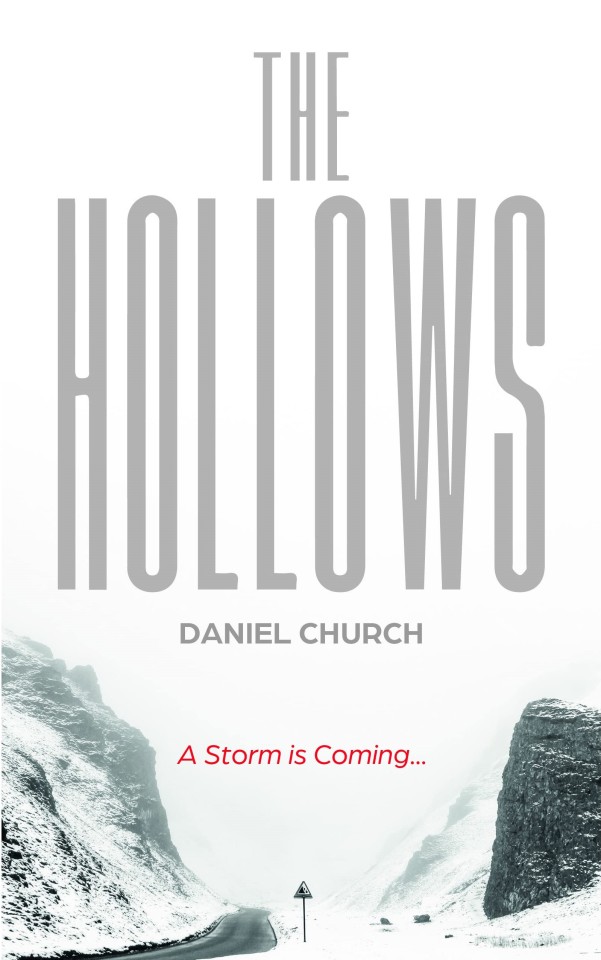
Title: The Hollows Author: Daniel Church Genre/s: mostly folk horror, with a bit of what I’d call survival horror in the middle Content/Trigger Warnings: implied child and animal abuse, implied sexual assault, physical assault, kidnapping, human and animal death, gore Summary (from Angry Robot Books): In a lonely village in the Peak District, during the onset of a once-in-a-lifetime snow storm, Constable Ellie Cheetham finds a body. The man, a local ne’er-do-well, appears to have died in a tragic accident: he drank too much and froze to death. But the facts don’t add up: the dead man is clutching a knife in one hand, and there’s evidence he was hiding from someone. Someone who watched him die. Stranger still, an odd mark has been drawn onto a stone beside his body. The next victims are two families on the outskirts of town. As the storm rises and the body count grows, Ellie realises she has a terrifying problem on her hands: someone – or some thing – is killing indiscriminately, attacking in the darkness and using the storm for cover. The killer is circling ever closer to the village. The storm’s getting worse…and the power’s just gone out. Buy Here: https://angryrobotbooks.com/books/the-hollows/ Spoiler-free Review: A pretty fun read overall! The concept’s solid, and while it’s not what most people would think about when they think of folk horror, especially if their first contact with the genre is Midsomar or Wicker Man (the old one, not the remake), it fits in the genre pretty well. It takes a while for the connection to click, but when it does? Whooboy! Also like Midsomar and Wicker Man, I genuinely think this’d make a great movie or miniseries! There’s passages in the book that read as very cinematic, and a part of me wonders if this book was written with the possibility for adaptation into a show or film already in mind. Even if that was the case, I think it’d work wonderfully in a visual medium. Not sure which director would work best on this - I mean, Ari Aster’s the obvious choice because of his connection to folk horror, but there’s aspects to this that make me think another director might be a better fit. That being said: I wish the pace of the narrative was better. There were several chapters that I think could have been more tightly-written; for a moment I thought this was going to turn into survival horror, and I think it was that for a moment, which doesn’t make me happy (not because I think survival horror is a bad subgenre; it’s just not my schtick). But once you’re past that part the story picks up again; I just wish that slow chunk was, as I said, more tightly-written. Rating: Three creepy entities and one half-corpse (three and a half) Thoughts underneath the cut for spoilers
- There were plenty of nods to Lovecraft, particularly where the Harpers are concerned. I don’t know if those nods were deliberate, but there they are (or at least, there I think they are; it’s likely I’m the only one seeing them). - Speaking of nods to Lovecraft and the Harpers, I wonder if the veering away from incest when it came to Paul and Jessica was the author seeing what direction they were going and deciding “Nope!” at the last minute. This is only speculation, and I could be entirely wrong, but given the way that the “no incest happened here!” thing was put forward, I can’t help but wonder if that was the case regardless. - Can I just say that I love how women took care of most of the business in this novel? Not all of them met happy ends, but I’m glad for the ones who did. - Also: the scene where the Harpers were holding Charlotte Famuwiya and her boy hostage? And they said they’d had a noose around Charlotte’s neck? Godsdamn if that doesn’t say “lynching” to me, especially since Charlotte’s mixed-race. - And given the history of the village and the Harpers’ farm and their relationship to the Tatterskins and the old gods: fuck the Normans, and therefore, fuck the French.
1 note
·
View note
Text
2020 in books
2020 was a year of changed reading habits; people reading more than ever or not at all, some changing their tastes and others turning to old comforts. While there weren’t any huge overhauls on my end, more free time did mean a total of 32 in a wider range of genres. In the past couple of years I found a lot of the things I read to be kind of middling and ranked them accordingly, but this year had some strong contenders in the mix. With college officially behind me I love nonfiction again, and I really need to stop being drawn in by novels with long titles that ‘sound interesting.’ A piece of advice to my future self: they will only make you angry.
The Good
The Idiot by Fyodor Dostoevsky I loved the BBC radio play when I first listened to it back in 2017, but didn’t know if I could stomach the idea of actually reading the 700-page book, especially since I already knew the plot (spoiler alert: this had no effect and I gasped multiple times despite knowing what was going to happen; Fyodor’s just that good at atmosphere.) The story follows Prince Lev Myshkin, a goodhearted but troubled man entering 1860s Petersburg high society and meeting all of the wretched people therein as he navigates life, laughs, love, unanswerable questions of faith, and human suffering. I care about it in the same way I think other people care about reality TV shows and soap operas. I’m so personally invested in the drama and feel so many different emotions directed at these clowns that it’s like being a fan of Invitation to Love (with an ending equally upsetting to that of the show ITL is from, Twin Peaks.)
Salt: A World History by Mark Kurlanksy I adored this book. The first half reads a little like a Wikipedia article, and I was worried that it was leaning too clinical and would be disaffected with colonialism and indigenous peoples, but even that oversight is corrected for as the text goes on. It’s not going to be for everybody because it really is just the world’s longest encyclopedia entry on, well, salt, but it’s written with such excitement for the topic and is so well-researched and styled for commercial nonfiction that I think it deserves any and all praise it’s gotten. We have to talk about that time Cheshire was literally sinking into the ground, and companies who were over-pumping brine water to steal each other’s brine water said ‘no it’s okay it’s supposed to that’ so were legally dismissed as suspects.
Midnight Cowboy by James Leo Herlihy Cried. 10/10. The plot of Midnight Cowboy is very classic and actually has a lot in common with The Idiot, as 20-something Joe Buck moves from the American Southwest to NYC and meets myriad challenges as a sex worker. I’ve been obsessed with the movie for a few years now and the book made me appreciate it anew; I think it’s rare for an adaptation to take the risk of being so different from its source material while still capturing its spirit. The movie doesn’t include quieter moments like the full conversation with Towny or time spent in the X-flat, nor does it attempt to touch Joe’s internal monologue or his and Rico’s extensive backstories, but these things are essential to the book and are some of the best and most affecting writing I’ve ever read. Finally! The Great American Novel!
The Only Good Indians by Stephen Graham Jones I would firmly like to say that this is probably the best horror novel ever written. The setup is very traditional in that it’s about a group of friends facing supernatural comeuppance for a past mistake, but delivery on that premise is anything but familiar. A story about personal and cultural trauma that raises questions about what we owe to each other and what it means to be Blackfeet, with a cast that’s unbelievably real and sympathetic even at their absolute worst. Creepypasta writers trying to cash in on the cultural mythos of lumped-together tribes wish they were capable of writing something a tenth as gruesome and good as this. It could very well be a movie the visuals and writing style were so arresting, and I can’t wait to read whatever Jones writes next.
Found Footage Horror Films: Fear and the Appearance of Reality by Alexandra Heller-Nicholas This is the least accessible title on the list since it’s a college textbook for people with background in film, but it was so nice to read a woman unpacking film theory with the expertise and confidence it deserves that I have to rank it among the best. I had an absolute blast reading it and am going to have to stop myself from bringing up the horror of 1960s safety films as a cocktail icebreaker.
Blood in the Water: The Attica Prison Uprising of 1971 and Its Legacy by Heather Ann Thompson
The year’s toughest read by far, but also its most rewarding. Thompson uses mountains of documents, government-buried intel, and personal interviews to explain what happened at Attica from beginning to end, and does a fantastic job of balancing hard facts and ‘unbiased journalism’ with much-needed emotion and critical analysis. It’s more important reading in the 2020s than any kind of ‘why/how to not be racist’ book club book is going to be, and the historical context it provides is as interesting as it is invaluable. The second half drags a bit in going through lengthy trial processes with some assumed baseline knowledge of legalese (which I did not have. All that criminal minds in 2015… meaningless), but aside from that editing and prose are some of the best I’ve seen in nonfiction.
The Bad
The Woman in the Window by A.J. Finn A friend and I decided to read this together because I’m obsessed with how insane the author is and wanted to know if he can actually write.

He cannot.
The Beautiful Thing That Awaits Us All by Laird Barron Barron is an indie darling of the horror fiction scene, so I was excited to finally read one of his collections but can now attest that I hate him. If you’re going to do Lovecraft please deconstruct Lovecraft in an interesting way. I had actually written a lot about the issues I have with how he develops characters and plots, but one of the only shorthand notes I took was “he won’t stop saying ‘bole’ instead of tree trunk” and I feel like that’s the only review we need.
Bats of the Republic by Zach Dodson Look up a photo of this author because if I had bothered to glance at the jacket bio I honest-to-god wouldn’t have even tried reading this.
This Is How You Lose the Time War by Amal El-Mohtar and Max Gladstone I went in with high expectations since this is an epistolary novella I’d seen praised on tumblr and youtube but oh my god was there a reason I was seeing it praised on tumblr and youtube. This is bad Steven Universe fanfiction. Both authors included ‘listening to the Steven Universe soundtrack throughout’ in the acknowledgements, and to add insult to injury there’s a plug from my nemesis Madeline Miller.
The 7½ Deaths of Evelyn Hardcastle by Stuart Turton The premise of this one plays with so many tropes I like that I should have been more suspicious. It’s a dinner party with stock characters one would expect of Clue, and rather than our protagonist being the detective he’s a man with amnesia stuck in a 24-hour time loop. Body-hopping between guests, he must gather evidence using the skillsets of each ‘host’ until he either solves Evelyn Hardcastle’s murder or the limit of eight hosts runs out. I read a lot of not-very-good books, and it’s so, so much worse when they have potential to be fun. This is how you lose the most points, and how I abandon decorum and end up writing a list of grievances: • Our protagonist can only inhabit male hosts, which I think is a stupid writing decision not because I’m ‘woke’ but because wouldn’t it make sense for him to also be working with the maids, cooks, and women close to the murder victim? • Complaining about the limitations of hosts makes some sense (e.g- there’s a section where he thinks that it’s hard to be an old man because it’s difficult to get to the places he needs to be quickly), but one of his hosts is a rapist and one of his hosts is fat. Guess which one gets complained about more. • One of the later hosts is just straight-up a cop with cop knowledge that singlehandedly solves the case. We spend some time being like ‘wow I couldn’t have done it without the info all eight hosts helped gather’ but it was 100% the detective and he solves the murder using information he got off-screen. • The mystery itself is actually well-paced and I didn’t have a lot of issues with it (e.g, there’s a twist that I guessed only shortly before the end), which makes it all the worse that the metanarrative of this book is INSANE. No spoilers but the reveal as to why our unnamed protagonist is even in this situation is stupid. I just know they’re going to make it into a movie and I’m preemptively going to aaaaaaaaa!!!
Trust Exercise by Susan Choi The fact that this was the worst book I read all year, worse even than the bad Steven Universe fanfiction, and it won multiple awards makes my blood boil. I could rant about it for hours but just know that it’s a former theater kid’s take on perception and memory, and deals with sexual abuse in a way that’s handled both very badly and with a level of fake deepness that’s laughable. Select fake-deep quotes I copied down because at one point I said ‘oh barf’ aloud: -I’m filled with melancholy that’s almost compassion. It’s sad the same way. -[On a friendship ending] We almost never know what we know until after we know it. -Because we’re none of us alone in this world. We injure each other.
There are also bad sex scenes that I can’t quite make fun of because I think (HOPE?) they’re supposed to be a melodramatic take on how teenagers view sex, but I very much wanted to die. Flowers were alluded to. Nipples were compared to diamonds.
Honorable/Dishonorable Mentions (categorized as the same thing because, well,)
The Life and Death of Sophie Stark by Anna North This book was frustrating because the first third of it is fantastic. It’s set up to be a takedown of the manic pixie dream girl trope, jumping from person to person discussing their relationship with the titular Sophie, and indirectly revealing that she was just some girl and not the difficult and mysterious genius they all believed her to be. Then in the third act, BAM! She was that difficult and mysterious genius and she’s now indirectly brought all the people from her past together. I wanted to scream the plot beefed it so bad, but the good news is I really liked this octopus description.
It was the size of a three-year-old child, and it seemed awful to me that something could be so far from human and obviously want something as badly as it wanted to get out of the tank.
Radium Girls: The Dark Story of America’s Shining Women by Kate Moore Cool new nightmare speedrun strat is to hear a 2-second anecdote from a documentary that people used to get radium poisoning from painting watch faces, be curious enough that you buy a book to learn more, and be met with medical and legal horror beyond anything you could have imagined. This was almost one of my favorite books of the year! Almost.
Radium Girls is very lovingly crafted and incredibly well-researched; one of those things that’s hard to get through but that you want to read sections of again as soon as you’ve finished. The umbrage I take with it is that it’s very Catholic. The author and many of her subjects are Irish and their religion is important to them, but it casts a martyr-y narrative over the whole thing that I found uncomfortable. Seventeen-year-old girls taking a factory job they didn’t know was dangerous are framed as brave, working-class heroes, but there’s not a set moral lesson to be gained from this story. Sarah Maillefer didn’t make “a sacrifice” when she agreed to the first radium tests, she agreed because she was terrified. She didn’t think she was helping she was begging for help.
The Mushroom at the End of the World: On the Possibility of Life in Capitalist Ruins by Anna Tsing Tsing is an incredibly skilled researcher and ethnographer; there are so many good ideas in this book that I’d almost consider it essential leftist text… if I could stand the way it was structured. Tsing posits that because nature is built on precariousness she will build her book the same way, allowing it to grow like a mushroom, and thus chapters don’t progress linearly and are written more like freeform poetry than a series of academic arguments. Some people are really going to love that, but I’m me and a mushroom is a mushroom and a book is a book. I don’t think in the way Tsing does, and while I tried to keep an open mind it’s hard to play along when something is this academically dense and makes so many ambitious claims. As if to prove how different our structuring methods are, I’ve made my own thoughts into a pros and cons list
Things I liked: • ‘Contamination’ as something inherent to diversity • ‘Scalability’ as a flawed way of thinking (Tsing has written whole essays about this that I find very compelling, but a main example here is that China and the US have come down on Japanese matsutake research for being too ‘site specific’ and not yielding enough empirical data) • Discussing how Americans were so invested in self-regulating systems in the 1950s we thought they could be applied to literally everything, including ecosystems • “The survivors of war remind us of the bodies they climbed over- or shot- to get to us. We don’t know whether to love or hate the survivors. Simple moral judgements don’t come to hand.” • Any and all fieldwork Tsing shares is amazing; I especially liked reading about the culture of mushroom pickers living in the Cascades and their contained market system
Things I didn’t like: • Statements that sound deep but aren’t, e.g- “help is always in the service of another.” (Yep. That’s what that means. Unless an organism is doing something to help itself which then nullifies your whole opening argument.) • A very debatable definition of utilitarianism • “Capitalism vs pre-capitalism,” which seems like an insanely black-and-white stance for a book all about finding hidden middle ground • A chapter I found really interesting about how intertwined Japanese and American economies are, but it tries to cover the entire history of US-Japan relations. Seriously, starting with Governor Perry and continuing through present day, this could have been a whole different book and it’s a good example of what I mean when I say arguments feel too scattered (the conclusion it reaches is that in the 80s the yen was finally able to hold its own against the dollar. Just explain that part.) • A chapter arguing that ‘true biological mutualism’ is rarely a focus of STEM and is a new sociological development/way of thinking which is just… flat-out not true
For all the comparisons art gets to ‘being on a drug trip’ this anthropology textbook has come the closest for me. Moments of profound human wisdom, intercut with things I had trouble understanding because I wasn’t on the same wavelength, intercut with even more things that felt false or irrelevant. I can’t put it on the nice list but I am glad I read it.
11 notes
·
View notes
Text
Michael After Midnight: Hellboy

I really love Guillermo Del Toro’s work. I really do. His first Hellboy movie was the first film I ever saw from him and was a gateway drug to the rest of his filmography, Ron Perlman, and Hellboy himself. Because of the film and Teen Titans, Perlman became one of my favorite actors, and because of the film, I checked out the sequel and all the animated movies. I never got into the comics unfortunately, but it’s safe to say that Hellboy had an impact on me.
But, like… I really think people hold it and its sequel in too high of a regard. GDT’s Hellboy movies are good movies, don’t misunderstand me, but I wouldn’t really say they’re some of GDT’s best. The first film has a lot of great ideas but is bogged down by the fact it has a stupid, pointless love triangle with a bland everyman character and doesn’t let Doug Jones do Abe’s voice, and the second film can get a bit too silly to the point where there is a phantom Seth MacFarlane in a diving suit doing a bad German accent. It’s a testament to Ron Perlman, Doug Jones, and the effects that they can carry these films on the force of their personalities and spectacle alone. They’re fun action movies, but I think they lack a lot of the depth of GDT’s films like Pan’s Labyrinth and especially The Shape of Water or even the sheer awesome value of something like Pacific Rim. They’re worthy films in the man’s filmography, but they aren’t his artistic masterpieces.
Which made it so weird to me when this movie was announced, this reboot of a property anyone with any sense knew was long dead, and people started treating GDT’s movies like cinema’s Holy Grail. I love the combination of GDT and Perlman as much as anyone else guys, but come on, I’d rather have more Hellboy and have GDT finally take us to the Mountains of madness than have him fight an uphill battle to get a third Hellboy film made. And it’s not like this movie was rushed out immediately, this franchise got the reboot ten years later. People were seriously getting mad because a dead film series was getting rebooted just because of nostalgia. Again, can’t stress enough that I love Del Toro, I love Perlman, and the Hellboy movies they made together kick ass… but at some point you have to let go and move on, and hope for better things. Frankly, as I alluded to before, Del Toro’s Lovecraft adaptation is something I’m far more excited to see than I would be another Hellboy film from him.
God, what a detour that was, huh? I haven’t even talked about the actual movie I’m reviewing yet… well, despite everything, despite it being a reboot of a beloved but very dead franchise, despite suffering a lot of executive meddling and behind-the-scenes drama, despite it bombing at the box office due to poor release scheduling which leaves any sequels in doubt… it’s actually a pretty good film. Like, genuinely good, I wouldn’t even say “so bad it’s good,” though it really, really pushes it at times.
For instance, the plot is utter hogwash. It’s a bunch of mystical bullshit that just happens to get Hellboy from scene to scene and show us some cool magical shit, because while the story itself is dumb, the background and lore of the world is most certainly not. It’s an absolute mish-mash of all sorts of fantasy tropes, with the devil, King Arthur, Baba Yaga, giants, Mexican vampires, werecats, and fairies all thrown into the mix, with sprinklings of the Bible, Rasputin, Atlantis, Nazis, and whatnot thrown in for good measure. It’s the exact sort of crazy crossover fairytale madness I love about Hellboy. Baba Yaga in particular is fantastic and horrifying, with her one major scene really stealing the show, and the demons from Hell that pop in towards the end likewise leave an impression with their fantastically creative designs and gory methods of murder. Ah yes, there’s the biggest plus this movie has: the gore. The sheer levels of bloody violence this movie delivers in its fight scenes is nothing short of hilariously beautiful. Special mention has to go to the demon attack sequence at the end, which is like a highlight reel of blood and guts.
The movie definitely crammed a lot in to try and build up the world for a sequel, which is a risky thing for these big comic book universe films, and ultimately I don’t think it truly paid off well for it, sadly. I did like a lot of the backstory given to us, but a lot of the time it felt like it was bogging down the pacing. It’s like every time we have a new character, they have to spend five minutes detailing this time Hellboy pissed in their Cheerios and that’s why they hate monsters or whatever. Heck, even in a flashback a character kind of pauses to kind of explain what they’re about. It adds to the silliness, sure, but I feel like they should have slowed down and kind of eased into the worldbuilding instead of getting overexcited and blowing their load so quick.
The characters are mostly okay. Ian McShane is literally incapable of being bad, and getting to hear him say “fuck” with alarming regularity is great, and David Harbour is definitely a worthy succesor to Perlman in taking up the big red fist. The rest of the cast, though? They’re mostly just okay, and even the better ones like Hellboy’s sidekicks for the journey Alice and Ben are kind of thrown at us, show off their powers, and then get sidelined for a lot of the movie so Hellboy can punch everything, though Ben at least gets to help in the climactic fight and everyone shares a cool action scene at the end. Speaking of the climactic battle though, the climax as a whole is simultaneously cool and underwhelming, with Milla Jovovich’s big bad Nimue going down like a Milla Jovobitch. Nimue is not an awful protagonist, and she does have some good backstory to her, but ultimately she’s a bit underwhelming as an antagonist, though this is pretty standard for Hellboy movies after the first one. If nothing else, she gets defeated with the most amazingly bad pun imaginable, so she’s not on my shit list.
Frankly it’s really hard to quantify why I like this film; most would argue my criticism of the film would make it bad at worst, “so bad it’s good” at best, but I don’t think either criteria fits it, I think it’s a genuinely good film, just not a great one. It’s fun, it’s goofy, it’s cheesy, it’s gory, and even if it is a little dumb it has lot of good lore and absurd amounts of backstory for every character. This will be a weird comparison, but I feel like the comic book movie I’d say it most reminds me of is Suicide Squad, mainly because both films are dumb plots filled with interesting characters and lore, but where Suicide Squad is an entertaining hot mess, Hellboy is more akin to a very gory cheesy 80s/90s fantasy film.
I’d recommend this movie. It’s the sort of film you want to watch if you don’t want to think to hard and just want to have some gory fun. I think more open minded Hellboy fans will like it, and anyone who just likes big dumb action movies or cheesy dark fantasy films will get a kick out of this. It’s really not a completely bad movie by any means, but it certainly is a bit more bloated and less polished than it could have been, kind of like a Pirates of the Caribbean sequel.
I’m no oracle or anything, but I kind of see this film eventually developing a cult following, a sentiment Milla Jovovovich shares. It certainly has the makings of one – bad box office, critical revilement, rejection by audiences at first, lots of cheese, good ideas buried under the lack of polish, great ideas sticking out in the mix – but only time will tell. Frankly I don’t think it’s any worse than the other Hellboy films, and is an enjoyable take on the character in its own right. I hope it manages to finds its audience eventually, and while I don’t think it will ever be as big or beloved as fellow critically reviled campy superhero film Venom, I think it deserves at least a fraction of the respect that movie got.
#Michael After Midnight#Review#Movie review#Hellboy#Hellboy 2019#David Harbour#Ian McShane#comic book movie#fantasy#dark fantasy#demons and shit
22 notes
·
View notes
Text
Heeding the Call: Cthulhu and Japan
Depending on your interests, the name Cthulhu may stir feelings of some strange familiarity, or an excited, nearly existential sense of horror to come. Despite the fiction that birthed much of the “Cthulhu Mythos” being moderately popular, the cosmic horrors introduced by H.P. Lovecraft have morphed into a life of their own thanks to the work of his protege, August Derleth, leaving future generations to encounter the unknowable in various forms spanning video games, tv shows, movies, and perhaps the most popular forms, table-top roleplaying and board game experiences. Perhaps less well known, though, is the fact that the Cthulhu Mythos is exceedingly popular in Japan, and has a wide and exciting history of adaptations, works, and impact upon many of the genres we love in Japan to this day. Today, we’ll be taking a look and exploring that history!
The history of Cthulhu in Japan is a bit more diverse than you might initially think, and isn’t as unified as it might seem! The first bits of spreading horror came from translations of H.P. Lovecraft’s original works into Japanese in the 1940s, appearing in the horror publication Hakaba (or Graveyard) Magazine, translated by Nishio Tadashi. These early translations would prove vastly popular, and over the years ended up leading to numerous Japanese adaptations and inspirations based on Lovecraft’s original works.
Anime and manga fans are likely somewhat familiar with Kaoru Kurimoto, creator of Guin Saga, Hideyuki Kikuchi, creator of Vampire Hunter D, fan favorite horror author Junji Ito, and legendary mangaka Shigeru Mizuki, who all claimed Lovecraft as a direct influence on their works at some point. That existential, cosmic, unknowable horror is certainly present in Ito’s works like Uzumaki, and Mizuki’s interest in folklore and yokai make an attraction to the Cthulu Mythos a lot more understandable. Mizuki actually drew an adaptation of the classic story The Dunwich Horror under the title Chitei no Ashioto, simply moving the story and characters to Mizuki’s beloved setting of rural Japan.
Perhaps one of the most influential Lovecraft inspired creators in anime though is Chiaki J. Konaka, likely best known to many for his work on series like Serial Experiments Lain, Digimon Tamers, and Big O, as well as other series like Armitage III (which takes its name from a Lovecraft character!), RaXephon and Texnolyze among many others. Konaka’s career extends into the Tokusatsu side of things as well, having worked on numerous Ultraman series ranging from Tiga, Gaia, Max, and more, as well as many other series. Konaka worked in references to the Cthulhu Mythos into many of his projects, and even wrote his own short fiction; one of them, Terror Rate, was even published in English, and was even a guest of honor at the HP Lovecraft Film Festival in 2018!
Much of the spread and popularity of Cthulhu fiction in Japan is owed to a few people, one of the most notable being Ken Asamatsu. Asamatsu has spent much of his career translating and spreading Lovecraft’s works in Japan, running fanzines and other publications in order to spread his love of the existential dread universe. While Asamatsu has worked on a few manga himself, he isn’t exactly an anime or manga creator, but without his input and dedication, it is unlikely that these works would ever be as popular as they are today!
Existential, creeping, unknowable horror translates well to other mediums as well, so it should come as little surprise that video games share various callbacks and influences from the Cthulhu Mythos as well. Atlus’s Shin Megami Tensei series and its many spin-offs feature numerous callbacks to Cthulhu Mythos characters and creatures, with some of the most obvious being Nyarlathotep’s direct role in Shin Megami Tensei: Persona and Persona 2. Many of the other titles reference things like the Necronomicon, with that same text being the initial persona of Persona 5’s Futaba Sakura.
Aside from Shin Megami Tensei, there are less obvious, but somewhat hard to miss, references to many of the tropes and unique style of horror in the Cthulhu Mythos in From Software’s Demon’s Souls, Dark Souls, and most directly Bloodborne games. Demon’s Souls in particular draws heavily on the existential, unknowable horror that is descending upon the kingdom of Boletaria and the secrets behind its true collapse, and the Dark Souls games similarly feature somewhat Lovecraftian ideas and monsters. Of the three, Bloodborne is the most direct with its inspirations, with characters routinely discussing the fact that seeing more of the truth may drive one mad, cosmic entities controlling, mutating, and destroying humanity, fish people (a staple of Lovecraft’s works), and humongous, tentacle-faced monsters (here known as Amygdala).
Ironically, however, there is actually another reason for the popularity of Cthulhu Mythos in Japanese media that helped spread its flavorful influence amongst various genres, and it actually has little to do with Lovecraft’s actual writings themselves. Instead, many Japanese fans encounter Lovecraft’s elder gods through the table-top role-playing game Call of Cthulhu, first published in Japan 1986, and the explosion in popularity was not only a staggering success, but it continues to this day! Although many Western fans might assume that TTRPG games like Dungeons and Dragons are popular in Japan due to some of their influences in fantasy anime, Call of Cthulhu reigns supreme as the most popular TTRPG in Japan, and its popularity likely helped introduce many Japanese to the TTRPG genre in the first place!
Call of Cthulhu is, essentially, a group mystery adventure game, and that seems to have really hit big with Japanese audiences far and wide, because the game has remained in print since its initial introduction in the nineties, and has fans of all ages and genders playing in groups, to the point that some places will find their rooms for group meetings rented out to play games of Call of Cthulhu! Recently, the game even got some favorable air time in an NHK news segment, talking about the game itself and the fun that can be had with it! With this popularity came the growth of a somewhat unique phenomenon: Replays, essentially narrative, semi-novelized versions of Call of Cthulhu campaigns collected and printed for other people to read, similar to today’s popular “actual play” podcasts and videos such as Critical Role or The Adventure Zone. Even today, Call of Cthulhu replays are extremely popular, with new versions being printed all the time, sometimes even adorned with amazing, cute anime styled art and other interesting little design choices, like semi-doujinshi level works featuring Touhou characters, and more! These Replays became so popular that they soon spread to other types of TTRPGs, and are the inspiration behind anime such as Record of Lodoss War, Slayers, and many others!
If one were to search Cthulhu on Amazon.jp, you’d actually find that most of the results are these colorful and interesting Replay books, almost more so than you’d even find the original novels and stories by Lovecraft himself! There are many other fascinating fan inspired books about the Cthulhu Mythos, including a personal favorite of Cthulhu monsters arranged in a book similar to those of Kaiju and Tokusatsu stylings (even featuring a cartoon Lovecraft on the cover doing the famous Ultraman pose). There are other small Cthulhu publications in Japanese, include a manga anthology called Zone of Cthulhu and numerous adaptations, and Gou Tanabe’s versions are even being translated into English, with The Hound and Other Stories already available, and At the Mountains of Madness coming later this year.
Of course the Cthulhu love isn’t limited to just print media; many anime have featured some nods and callbacks to the mythos, such as in the visual novel and anime of the same name Demonbane, which is even set in Lovecraft’s beloved Arkham. Main character Kuro Daijuji works with Al Azif, the living personification of the Necronomicon, to defeat the nefarious Black Lodge (a very probable nod to David Lynch’s Twin Peaks here). As mentioned above, numerous works by Chiaki J. Konaka draw from the Cthulhu Mythos, but Digimon Tamers might be the most surprising, with callbacks to Miskatonic University and Shaggai, as well as a computer AI that seems to have more in common with the Great Old Ones than it does Skynet! Another example is a fairly popular series, Bungo Stray Dogs, where one of the characters... is actually named Lovecraft! But that's not all! His "The Great Old Ones" ability is a reference to Cthulhu's origins. Probably one of the most famous examples is Nyaruko: Another Crawling Chaos, where the monsters of Lovecraft’s works are revealed to actually be aliens, but still very weird! The anime is a comedy featuring numerous Mythos characters repurposed or slightly renamed, such as Nyarlathotep as Nyaruko, the Yellow King Hastur, and more. The series of novels proved popular enough to spawn 3 anime seasons and other spin offs, proving that even if you take the horror out of the Mythos, people will still find it entertaining and… cute?
Speaking of cute, this brings us to a few interesting final tidbits about the Cthulhu Mythos and Japan. Aside from the direct popularity, the language change and differences have led to a few running gags in Japan about the series, one of which has to do with the somewhat infamous Cthulhu cultist chant, “Ia Ia Cthulhu Ftaghn,” with “Ia Ia” being pronounced very similar to the Japanese expression “iya iya”, which has a few various uses in casual Japanese, either meaning something similar to “um” or “no” depending on how and where it is used. The second comes from the fact that Japanese, being a syllabic language, actually has an easier time pronouncing the supposedly “unpronouncable” names of the Cthulu Mythos creatures, with Cthulhu being translated as クトゥルフ, or “Kutourufu”, which is not only a lot easier to actually say, but sounds oddly cute for the sinister elder god!
Cthulhu mania seems as popular as ever both outside and inside of Japan, with new games, movies, comics, and more drawing inspiration from the titles. Although Lovecraft’s own works are less popular than when the fascination started, the current passion for his ideas stems from the attractive allure of the unknown, the potential darkness lingering in shadows and dark pools of water. Whatever the reason people flock to the Cthulhu Mythos, it seems like we can look forward to numerous adaptations, inspirations, and callbacks for years to come… until perhaps even Cthulhu awakens! Until then, it’s best to keep your wits about you and stock up on your esoteric lore… You never know where the elder gods might pop up next during your next anime, manga, or video game binge!
Have any secret and mysterious ancient Cthulhu influences we didn’t mention? Know of any other influences on Japan you’d like us to cover? Let us know in the comments!
----
Nicole is a features and a social video script writer for Crunchyroll. Known for punching dudes in Yakuza games on her Twitch channel while professing her love for Majima. She also has a blog, Figuratively Speaking. Follow her on Twitter: @ellyberries
Do you love writing? Do you love anime? If you have an idea for a features story, pitch it to Crunchyroll Features!
3 notes
·
View notes
Text
20 Best Horror Films from the 80s Pt. 2
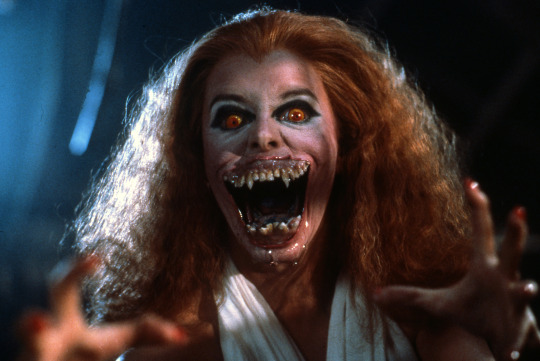
Fright Night (August 2, 1985)
Vampires in the 80s? Yes please! Fright Night starring William Ragsdale, Chris Sarandon, and Roddy McDowall may not have been the most memorable film from the 80s, but you have to give it some credit. What’s great about Fright Night, is that this movie has vampires and werewolves, or just vampires who take the form of a werewolf I guess. The characters in this film make fun of the cheesy late night horror films as well as comment on how people lost interest in vampires for homicidal maniacs.

Re-Animator (October 18, 1985)
Re-Animator is adapted from H.P. Lovecraft’s Herbert West- Reanimator, and is essentially a Frankenstein tale on steroids. The film follows Herbert West who has formulated a serum to bring the dead back to life. Things don’t go exactly to plan, and West’s discovery ends up creating more problems than scientific breakthroughs. The makeup and special effects made this movie stand out, but Jeffrey Combs’ portrayal of a mad scientist really brought the film together.
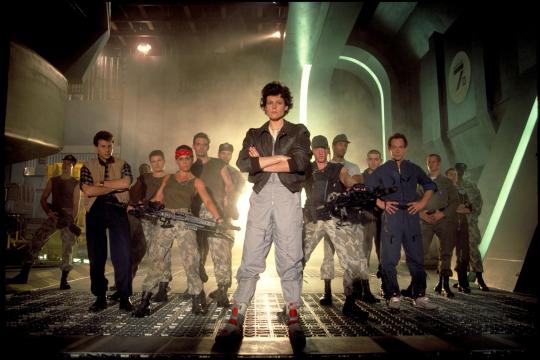
Aliens (July 18, 1986)
With as popular as Alien was, a sequel was inevitably going to happen. While the first film was directed by Sir Ridley Scott, Aliens was directed by none other than the famous James Cameron. People still debate to this day which Alien film is better. While the first film focused on the horror of one alien, Aliens introduced the war aspect to the movies, as well as a seemingly infinite amount of Xenomorphs. Ripley makes a triumphant return, but the new characters such as Newt, Bishop, Hicks, and Hudson are equally as memorable.
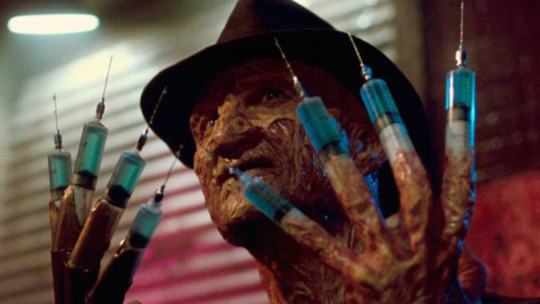
A Nightmare on Elm Street 3: Dream Warriors (February 27, 1987)
A Nightmare on Elm Street 3: Dream Warriors may not be able to beat out the original, but it stands as the best sequel of the entire franchise. Heather Langenkamp returned to Elm Street in 1987 by reprising her role of Nancy Thompson. While this was one of the major reasons why this film did well, it also helped that the story was really well written. Even though Wes Craven’s and Bruce Wagner’s original script was changed drastically by Frank Darabont and Chuck Russell, the story was still riveting. Instead of having one person fight Freddy, Craven thought that it was time for a group of kids to fight him; hence “Dream Warriors”. Even though Wes Craven got gypped after he penned the first script, Dream Warriors still stands as many people’s favorite Freddy flick.
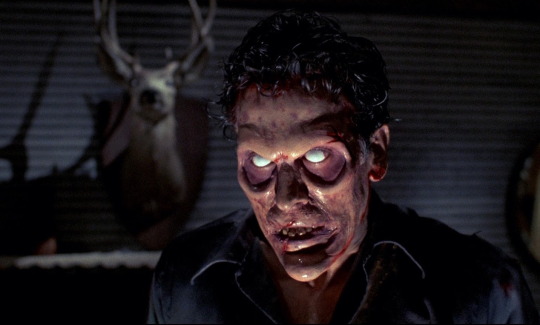
Evil Dead 2 (March 13, 1987)
When 1987 rolled around Evil Dead 2 was released and people loved it even more than the first. With even more gore and slapstick violence, Evil Dead 2 succeeded in being both a horror movie and a comedy, which can be hard to do. This sequel also introduced viewers to a deadite version of Ash as he was attacked at the end of the first one. Even though there are some massive continuity issues between the first and second films, people seem to overlook them. It’s easy to overlook issues when you have scenes as epic as Ash attaching a chainsaw to his arm and saying, “groovy”.
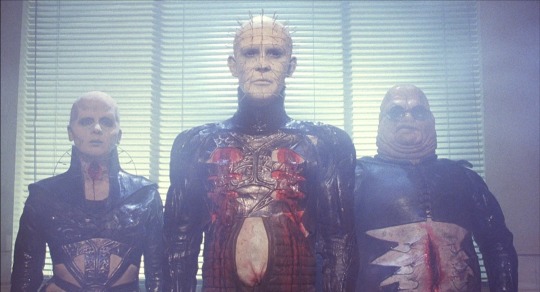
Hellraiser (September 18, 1987)
The Hellraiser series started back on in 1987 when Clive Barker’s first film in the franchise came out. Known for its excessive gore and chilling special effects, Hellraiser introduced everyone’s favorite demonic cenobite named Pinehead. Pinehead was accompanied by a female cenobite and two other cenobites known as Butterball and the Chatterer. All of them are equally as terrifying, but Pinehead usually tends to steal the show. Fans of the series can catch the latest installment when Hellraiser: Judgement comes out sometime this year.
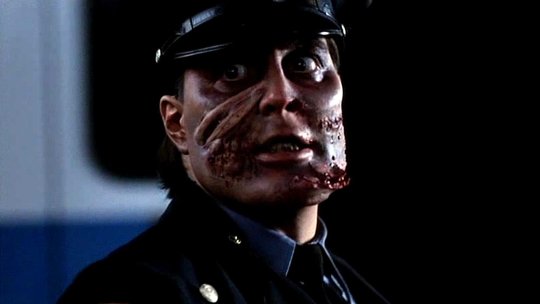
Maniac Cop (May 13, 1988)
Maniac Cop may not be a film everyone has seen, but it does feature everyone’s favorite deadite slayer! After Bruce Campbell slayed deadites in Evil Dead and Evil Dead 2 he took a break from running around in the woods, to become a cop in New York City. While they never explain in the first film how the main villain is able to withstand the trauma that he receives, the film was still suspenseful. Usually you can trust police officers, which is why the idea behind Maniac Cop ended up being so frightful.
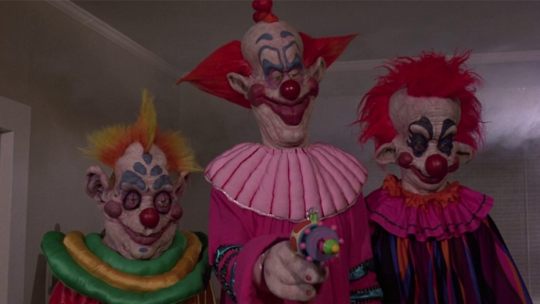
Killer Klowns from Outer Space (May 27, 1988)
Killer Klowns from Outer Space is probably one of the silliest horror films on this list. If having guns that shoot out popcorn and cocooning their victims with cotton candy weren’t funny enough, their look will certainly do it for you. The masks and outfits for the actors are one of a kind and unlike anything else on this list. The tagline for this movie really sums it up perfectlty; “It’s crazy!”.
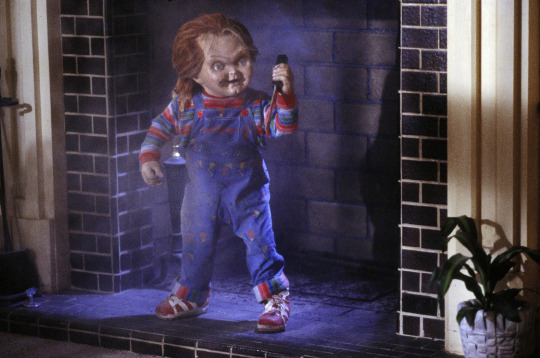
Child’s Play (November 9, 1988)
Evil dolls are often used as a scare tactic in horror movies, but Chucky is still probably one of the scariest. In his debut in Child’s Play, serial killer Charles Lee Ray gets shot by the police, but not before he transfers his soul into a Good Guy’s doll. Ever since then, Chucky has been a symbol of the horror genre. The idea of Chucky is still terrifying to this day, especially since they used practical effects on set. Ed Gale played Chucky for some of the scenes that were too extreme to use a puppet. Fun fact, Ed Gale is also the guy who dressed up as Howard in Howard the Duck!
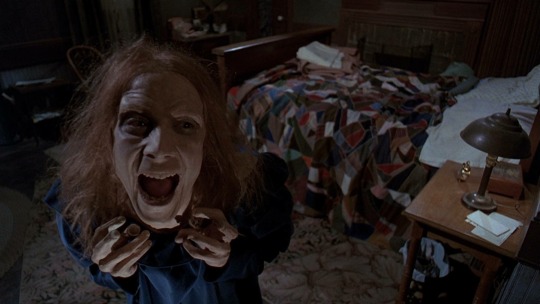
Pet Sematary (April 21, 1989)
While it may not be as famous as Stephen King’s IT or The Shining, Pet Sematary is another one of his works that got a film adaptation. Pet Sematary is about a family who moves into a house that is next to, you guessed it, a pet cemetery. What makes the cemetery special is that it is connected to a MicMac burial ground which can bring dead animals, and humans back to life. Honestly, the best part of this film is Jud Crandall who is played by Fred Gwynne. Maybe it’s because he played an interesting character, or maybe it is just because he previously played Herman Munster, but either way he was a highlight of the film.So those are Flap’s Film Files 20 best horror films. Did I miss any of your favorites? Let me know in the comments below and don’t forget to hit that like or share button!
Flap’s Film Files- Tumblr Blog and Facebook Page
#fright night#flaps film files#movies#film#nightmare on 1428#a nightmare on 1428#werewolves#vampires#reanimator#hp lovecraft#Jeffrey combs#aliens#alien#Ridley scott#James cameron#bishop#ripley#Sigourney Weaver#xenomorphs#xenomorph#a nightmare on elm street 3#a nightmare on elm street 3 dream warriors#dream warriors#wes craven#freddy krueger#fred krueger#Nancy thompson#heather langenkamp#evil dead#the evil dead
37 notes
·
View notes